-
 Bitcoin
Bitcoin $109,459.7682
2.44% -
 Ethereum
Ethereum $2,598.6052
6.29% -
 Tether USDt
Tether USDt $1.0003
0.00% -
 XRP
XRP $2.2734
3.95% -
 BNB
BNB $661.4886
1.58% -
 Solana
Solana $155.4825
4.35% -
 USDC
USDC $0.9999
-0.02% -
 TRON
TRON $0.2838
1.04% -
 Dogecoin
Dogecoin $0.1740
8.25% -
 Cardano
Cardano $0.6047
9.04% -
 Hyperliquid
Hyperliquid $40.2302
6.50% -
 Sui
Sui $2.9863
10.05% -
 Bitcoin Cash
Bitcoin Cash $509.5786
0.60% -
 Chainlink
Chainlink $13.8156
6.03% -
 UNUS SED LEO
UNUS SED LEO $9.0142
0.69% -
 Avalanche
Avalanche $19.0337
8.68% -
 Stellar
Stellar $0.2438
5.17% -
 Toncoin
Toncoin $2.9012
3.59% -
 Shiba Inu
Shiba Inu $0.0...01210
6.20% -
 Litecoin
Litecoin $90.0882
7.05% -
 Hedera
Hedera $0.1597
8.53% -
 Monero
Monero $326.3340
2.88% -
 Polkadot
Polkadot $3.6365
9.32% -
 Bitget Token
Bitget Token $4.6162
2.72% -
 Dai
Dai $1.0001
0.00% -
 Ethena USDe
Ethena USDe $1.0002
-0.01% -
 Uniswap
Uniswap $7.6403
10.47% -
 Pepe
Pepe $0.0...01060
12.03% -
 Aave
Aave $281.3664
7.56% -
 Pi
Pi $0.4992
1.76%
What are oracles in blockchain?
Oracles bridge blockchain and real-world data, enabling smart contracts to execute based on external inputs like prices or sensor readings.
Jul 03, 2025 at 05:22 pm
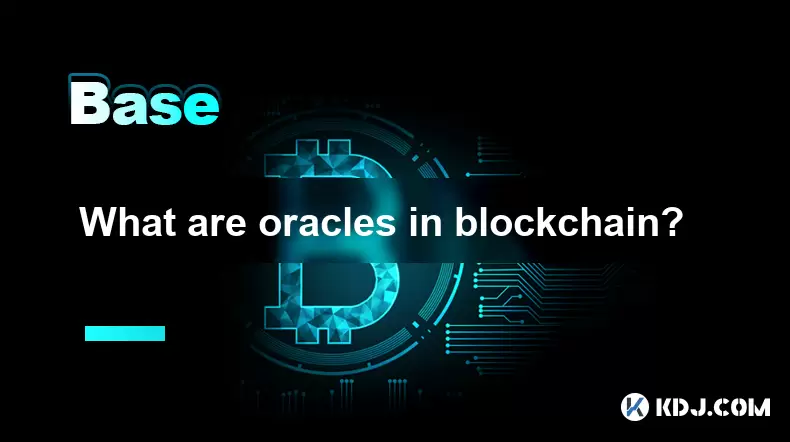
Understanding the Role of Oracles in Blockchain
Oracles in blockchain refer to third-party services that provide external data to smart contracts. Since blockchains operate in a closed and secure environment, they cannot access real-world information on their own. This limitation makes oracles essential for smart contracts that require up-to-date data from outside the network, such as weather conditions, stock prices, or event outcomes.
Oracles act as bridges between the on-chain and off-chain worlds, enabling smart contracts to execute based on real-time or verified external inputs. Without oracles, smart contracts would be restricted to the data already stored within the blockchain, limiting their applicability in real-world scenarios.
Smart contracts depend on oracles to trigger actions like payments, insurance claims, or automated decisions.
Different Types of Oracles
There are several types of oracles designed to serve different functions within the blockchain ecosystem:
- Software Oracles: These connect to online data sources and relay information like price feeds or API responses.
- Hardware Oracles: These interact with physical devices such as sensors or RFID chips to bring real-world events onto the blockchain.
- Inbound Oracles: These deliver external data into the blockchain for smart contract execution.
- Outbound Oracles: These send data from the blockchain to external systems, allowing smart contracts to trigger real-world actions.
- Human Oracles: These involve individuals with specialized knowledge providing data inputs after verification.
Each type plays a unique role in ensuring that blockchain applications can interact with the broader digital and physical world. Choosing the right oracle depends on the use case, required trust level, and the nature of the data being integrated.
How Do Oracles Work?
The process of using an oracle involves multiple steps that ensure data integrity and reliability:
- A smart contract requests specific data from an oracle.
- The oracle retrieves the required information from an external source.
- The oracle validates and processes the data before sending it back to the blockchain.
- The smart contract uses this data to determine its next action or outcome.
This interaction is crucial in decentralized finance (DeFi) platforms, prediction markets, and supply chain solutions where accurate external data is necessary for correct execution.
Ensuring the authenticity and tamper-proof nature of oracle-provided data is vital for maintaining trust in blockchain-based systems.
Challenges and Risks Associated With Oracles
Despite their importance, oracles introduce certain vulnerabilities into the blockchain system:
- Single Point of Failure: If an oracle is compromised, the data fed into the smart contract becomes unreliable.
- Data Manipulation: Malicious actors may attempt to alter the input data to influence contract outcomes.
- Centralization Concerns: Many oracles are centralized, which contradicts the decentralized ethos of blockchain technology.
- Trust Dependency: Users must trust the oracle provider to deliver accurate and timely information.
These risks have led to the development of decentralized oracle networks, where multiple independent oracles contribute data, reducing the risk of manipulation and increasing overall reliability.
Mitigating oracle-related risks requires robust cryptographic techniques, reputation systems, and multi-source validation mechanisms.
Popular Oracle Solutions in the Blockchain Space
Several projects specialize in providing oracle services to enhance smart contract functionality:
- Chainlink: A leading decentralized oracle network that connects smart contracts with various data sources through a secure and reliable framework.
- Band Protocol: Another decentralized oracle platform that aggregates and verifies data from multiple sources before delivering it to the blockchain.
- API3: Focuses on building first-party oracles, eliminating intermediaries by having data providers directly serve the blockchain.
These platforms offer tools and infrastructure to developers aiming to integrate real-world data securely into blockchain applications. Each solution has its architecture, consensus mechanism, and security model tailored for specific use cases.
Selecting the appropriate oracle service depends on factors such as data accuracy, latency requirements, and the degree of decentralization desired.
Frequently Asked Questions
Can a blockchain function without oracles?
Yes, but only for applications that rely solely on internal data. For most real-world use cases—such as DeFi loans, insurance, or supply chain tracking—oracles are necessary to bring in external data.
Are all oracles centralized?
No, while some oracles are centralized, there are also decentralized oracle networks that aim to eliminate single points of failure and increase trustworthiness.
How do decentralized oracles ensure data accuracy?
Decentralized oracles often use multi-source aggregation, staking mechanisms, and cryptographic proofs to validate data before it's used by smart contracts.
Is it possible to manipulate oracle data?
While efforts are made to prevent manipulation, any oracle system can be vulnerable if not properly secured. Using decentralized models and reputation-based incentives helps reduce the risk of tampering.
Disclaimer:info@kdj.com
The information provided is not trading advice. kdj.com does not assume any responsibility for any investments made based on the information provided in this article. Cryptocurrencies are highly volatile and it is highly recommended that you invest with caution after thorough research!
If you believe that the content used on this website infringes your copyright, please contact us immediately (info@kdj.com) and we will delete it promptly.
- PEPE Price Surges Amid Golden Cross: Memecoin Market Heats Up!
- 2025-07-03 23:10:15
- Cooking.City Launches on Solana: A Recipe for On-Chain Success?
- 2025-07-03 23:10:15
- Bitcoin's Wild Ride: ETF Performance, Unemployment Data, and a $90K Dip?
- 2025-07-03 22:35:14
- Blue Gold, Blockchain, and Gold Tokens: A New Era for Digital Assets?
- 2025-07-03 22:35:14
- Davidovich Fokina's Wedding Album: A Tennis Star's Fairytale
- 2025-07-03 23:15:12
- Crypto Gems with 10x Potential: Is Mutuum Finance the Next DeFi Sensation?
- 2025-07-03 23:20:13
Related knowledge

What is open interest in derivatives?
Jul 03,2025 at 02:49pm
Understanding Open Interest in DerivativesOpen interest is a critical metric used in the cryptocurrency derivatives market, particularly when analyzing futures and options contracts. It represents the total number of outstanding contracts that have not been settled or closed by either party involved. Unlike trading volume, which counts all trades made i...
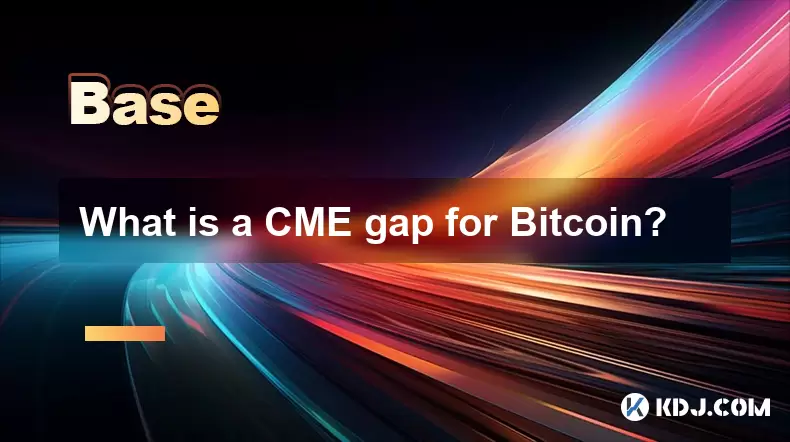
What is a CME gap for Bitcoin?
Jul 03,2025 at 05:49pm
Understanding the Concept of a CME GapA CME gap refers to a discrepancy in price between the closing price of Bitcoin on the Chicago Mercantile Exchange (CME) and its opening price when trading resumes. This phenomenon occurs because the CME operates during specific hours, typically aligned with traditional market hours, while cryptocurrency markets ope...
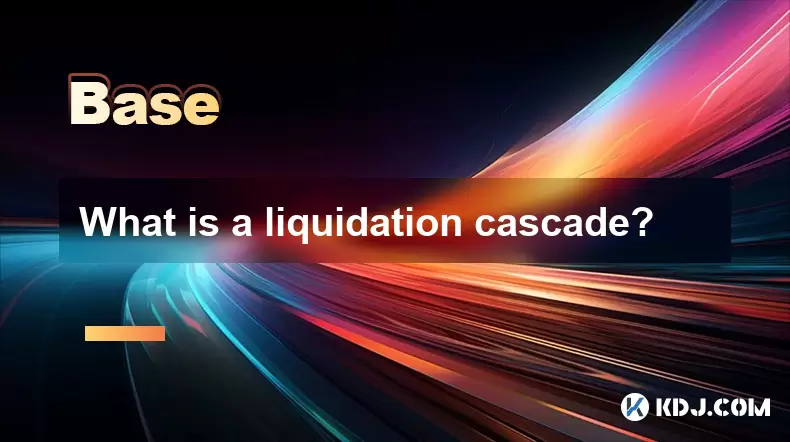
What is a liquidation cascade?
Jul 03,2025 at 07:15am
Understanding the Concept of LiquidationIn the realm of cryptocurrency trading, liquidation refers to the process by which a trader's position is automatically closed due to insufficient funds to maintain the leveraged trade. This typically occurs when the market moves against the trader's position and their account equity falls below the required maint...
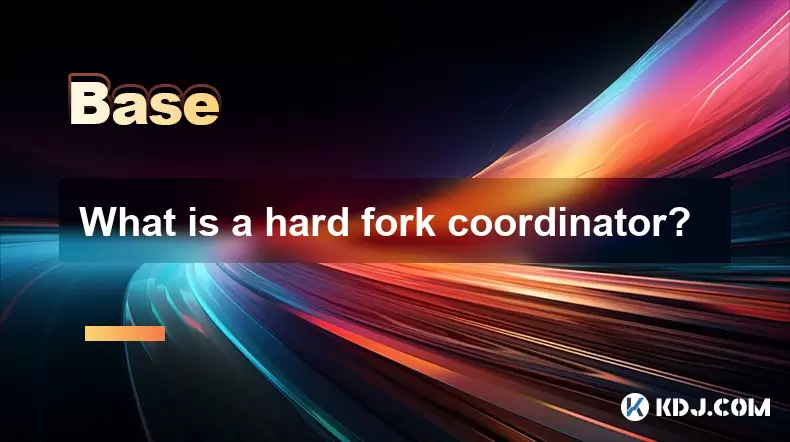
What is a hard fork coordinator?
Jul 03,2025 at 12:42pm
Understanding the Role of a Hard Fork CoordinatorIn the world of blockchain and cryptocurrencies, a hard fork coordinator plays a critical role during major network upgrades. A hard fork is a significant change to a blockchain’s protocol that makes previously invalid blocks or transactions valid (or vice versa). This type of upgrade requires all nodes o...
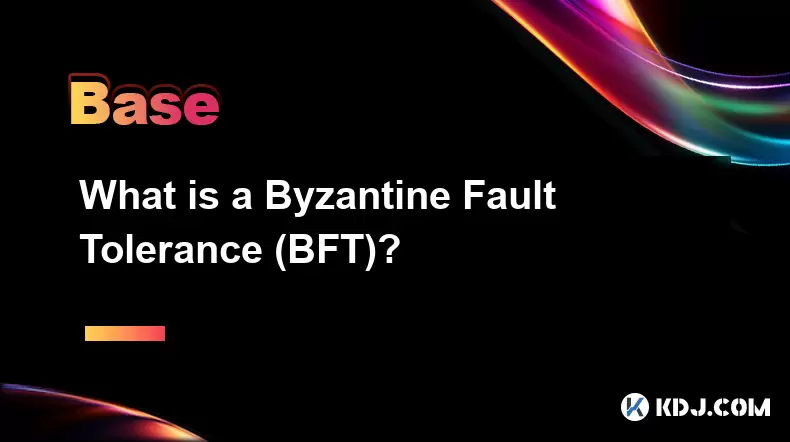
What is a Byzantine Fault Tolerance (BFT)?
Jul 03,2025 at 11:49am
Understanding the Concept of Byzantine Fault ToleranceByzantine Fault Tolerance (BFT) is a critical concept in distributed systems, particularly within the realm of blockchain technology and cryptocurrencies. It refers to the ability of a system to continue functioning correctly even when some components fail or behave maliciously. The term originates f...
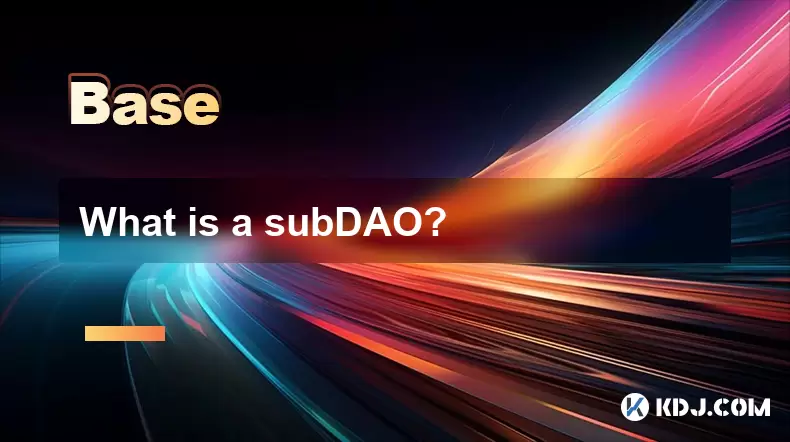
What is a subDAO?
Jul 03,2025 at 09:36am
Understanding the Concept of SubDAOA SubDAO, short for Sub-Decentralized Autonomous Organization, is a specialized entity that operates under the umbrella of a larger DAO (Decentralized Autonomous Organization). It functions with its own set of rules, governance mechanisms, and tokenomics while remaining aligned with the overarching goals of the parent ...

What is open interest in derivatives?
Jul 03,2025 at 02:49pm
Understanding Open Interest in DerivativesOpen interest is a critical metric used in the cryptocurrency derivatives market, particularly when analyzing futures and options contracts. It represents the total number of outstanding contracts that have not been settled or closed by either party involved. Unlike trading volume, which counts all trades made i...

What is a CME gap for Bitcoin?
Jul 03,2025 at 05:49pm
Understanding the Concept of a CME GapA CME gap refers to a discrepancy in price between the closing price of Bitcoin on the Chicago Mercantile Exchange (CME) and its opening price when trading resumes. This phenomenon occurs because the CME operates during specific hours, typically aligned with traditional market hours, while cryptocurrency markets ope...

What is a liquidation cascade?
Jul 03,2025 at 07:15am
Understanding the Concept of LiquidationIn the realm of cryptocurrency trading, liquidation refers to the process by which a trader's position is automatically closed due to insufficient funds to maintain the leveraged trade. This typically occurs when the market moves against the trader's position and their account equity falls below the required maint...

What is a hard fork coordinator?
Jul 03,2025 at 12:42pm
Understanding the Role of a Hard Fork CoordinatorIn the world of blockchain and cryptocurrencies, a hard fork coordinator plays a critical role during major network upgrades. A hard fork is a significant change to a blockchain’s protocol that makes previously invalid blocks or transactions valid (or vice versa). This type of upgrade requires all nodes o...

What is a Byzantine Fault Tolerance (BFT)?
Jul 03,2025 at 11:49am
Understanding the Concept of Byzantine Fault ToleranceByzantine Fault Tolerance (BFT) is a critical concept in distributed systems, particularly within the realm of blockchain technology and cryptocurrencies. It refers to the ability of a system to continue functioning correctly even when some components fail or behave maliciously. The term originates f...

What is a subDAO?
Jul 03,2025 at 09:36am
Understanding the Concept of SubDAOA SubDAO, short for Sub-Decentralized Autonomous Organization, is a specialized entity that operates under the umbrella of a larger DAO (Decentralized Autonomous Organization). It functions with its own set of rules, governance mechanisms, and tokenomics while remaining aligned with the overarching goals of the parent ...
See all articles

























































































